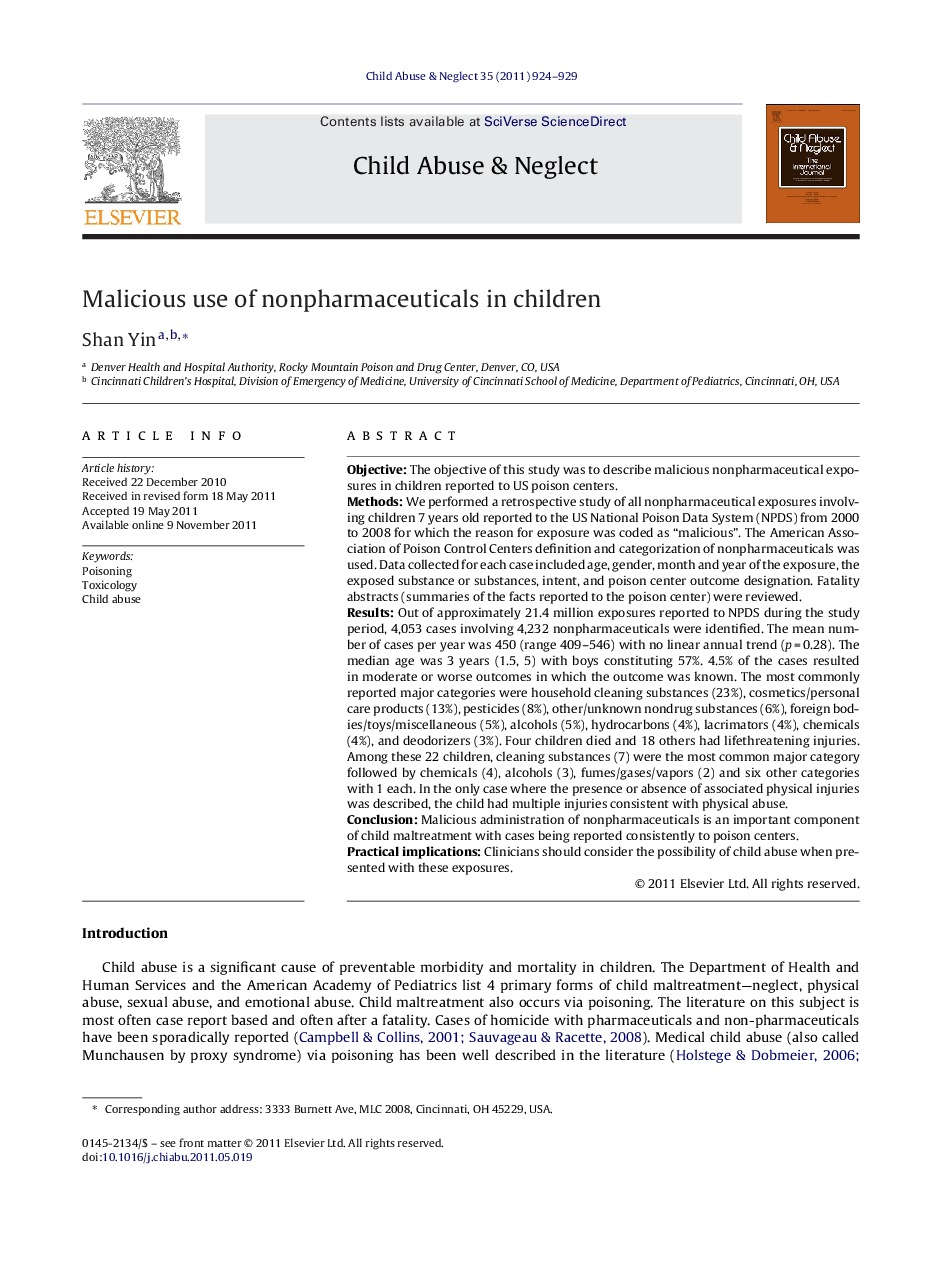| کد مقاله | کد نشریه | سال انتشار | مقاله انگلیسی | نسخه تمام متن |
|---|---|---|---|---|
| 345031 | 617476 | 2011 | 6 صفحه PDF | دانلود رایگان |

ObjectiveThe objective of this study was to describe malicious nonpharmaceutical exposures in children reported to US poison centers.MethodsWe performed a retrospective study of all nonpharmaceutical exposures involving children 7 years old reported to the US National Poison Data System (NPDS) from 2000 to 2008 for which the reason for exposure was coded as “malicious”. The American Association of Poison Control Centers definition and categorization of nonpharmaceuticals was used. Data collected for each case included age, gender, month and year of the exposure, the exposed substance or substances, intent, and poison center outcome designation. Fatality abstracts (summaries of the facts reported to the poison center) were reviewed.ResultsOut of approximately 21.4 million exposures reported to NPDS during the study period, 4,053 cases involving 4,232 nonpharmaceuticals were identified. The mean number of cases per year was 450 (range 409–546) with no linear annual trend (p = 0.28). The median age was 3 years (1.5, 5) with boys constituting 57%. 4.5% of the cases resulted in moderate or worse outcomes in which the outcome was known. The most commonly reported major categories were household cleaning substances (23%), cosmetics/personal care products (13%), pesticides (8%), other/unknown nondrug substances (6%), foreign bodies/toys/miscellaneous (5%), alcohols (5%), hydrocarbons (4%), lacrimators (4%), chemicals (4%), and deodorizers (3%). Four children died and 18 others had lifethreatening injuries. Among these 22 children, cleaning substances (7) were the most common major category followed by chemicals (4), alcohols (3), fumes/gases/vapors (2) and six other categories with 1 each. In the only case where the presence or absence of associated physical injuries was described, the child had multiple injuries consistent with physical abuse.ConclusionMalicious administration of nonpharmaceuticals is an important component of child maltreatment with cases being reported consistently to poison centers.Practical implicationsClinicians should consider the possibility of child abuse when presented with these exposures.
Journal: Child Abuse & Neglect - Volume 35, Issue 11, November 2011, Pages 924–929